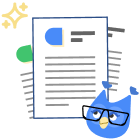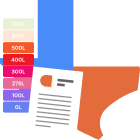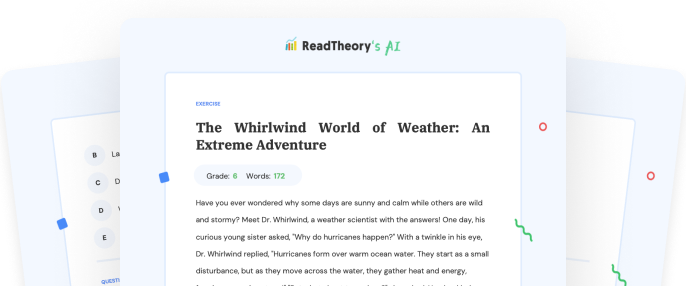Transform Your Teaching
with AI-Powered Worksheets
With ReadTheory’s Instant Worksheet Builder, you can create engaging, grade-appropriate worksheets tailored to your students in minutes. Spark curiosity, save time, and empower critical thinking with AI-powered tools designed for teachers like you.


The Art and Science of Music Writing
Songwriting is an intricate tapestry of creativity, emotion, and technical skill. From Mozart s symphonies to Beethoven s sonatas, each piece of music begins with an inspiration. This could be a personal experience, a striking landscape, or even a simple, recurring thought. Once inspired, a composer begins converting these abstract ideas into musical form. They manipulate elements of music like rhythm, melody, and harmony to create a unique sonic representation of their inspiration. For instance, Beethoven s Symphony No. 5, known for its iconic four-note motif, brilliantly illustrates how a simple rhythmic pattern can create a profound emotional impact. In the past, composers relied on pen and paper to document their work in musical notation. However, modern technology has revolutionized this process. Software like Finale or Sibelius allows composers to easily write, edit, and print their compositions. This advancement has made the music writing process more efficient without compromising the creative integrity of the art form. Composition, however, is only the tip of the iceberg. Once the piece is written, it undergoes a process of refinement, rehearsal, and finally, performance. Each stage involves a meticulous level of detail, ensuring the music communicates the composer s intention effectively. In essence, music writing is a fascinating journey of transforming abstract ideas into concrete, emotive soundscapes. It is a testament to the creative ingenuity of the human mind and continues to be a vital form of artistic expression.
Question 1
What can serve as an inspiration for a composer?
A personal experience
A novel
A mathematical equation
A basketball game
A car engine
Question 2
What software can be used by composers to write, edit, and print their compositions?
Photoshop
Microsoft Office
Google Chrome
Finale or Sibelius
Windows Media Player
Question 3
What is the iconic four-note motif known for?
Mozart s Symphony
Beethoven s Symphony No. 1
Beethoven s Symphony No. 5
Beethoven s Symphony No. 9
Mozart s Sonata
Question 4
What is the final stage a piece of music goes through after being composed?
Revision
Printing
Editing
Distribution
Performance
Question 5
What does the process of music writing begin with?
Manipulating elements of music
Using software to document the work
An inspiration
Performing the piece
Writing the rhythm
 or share via
or share via

Assign the ReadTheory pretest to determine students' reading levels.

Why Teachers Love
Instant Worksheet Builder?

Tailored Content for Every Student
Craft worksheets with passages and multiple-choice questions customized to your chosen topic and grade level, ensuring relevance and engagement.

Save Hours
of Prep Time
Our AI, Lexi, generates complete worksheets—passages, questions, and answers—in minutes, freeing you to focus on teaching, not planning.

Standards-Aligned Learning
Every worksheet is designed to boost reading comprehension and critical thinking, aligning seamlessly with State Standards to help your students shine.
Personalized teaching
for personalized learning
Browse worksheets created and refined by educators using Lexi—your source for inspiration and ready-to-use resources.


ReadTheory is free for Teachers to use.
Join thousands of educators using ReadTheory for free. Sign up today and start creating in just minutes!





